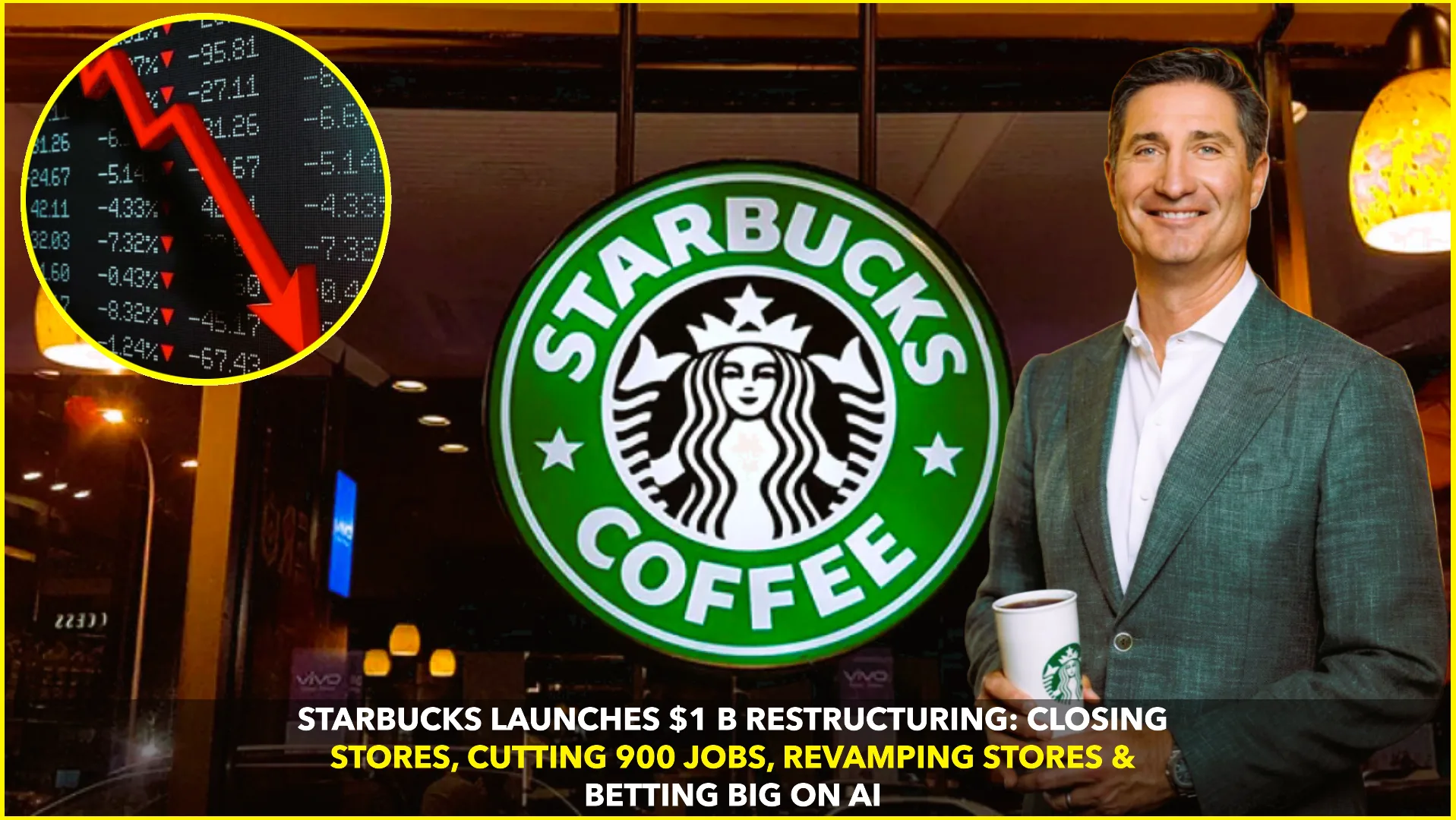Starbucks, the global coffee giant, has unveiled a sweeping $1 billion restructuring plan that will reshape its operations in North America. The company said it will close underperforming outlets, cut about 900 corporate roles, and funnel resources into stores that deliver growth and profitability (The Guardian).
A Response to Declining Sales
This dramatic shift comes after six consecutive quarters of declining U.S. sales, weighed down by higher labor costs, inflation, and changing customer habits. The company’s North American footprint is expected to settle at around 18,300 stores, a slight contraction from its current count (CNBC).
Job Cuts and Employee Support
As part of the overhaul, about 900 corporate and support staff positions will be eliminated. Starbucks stated that employees losing jobs will receive severance pay, extended health benefits, and, where possible, transfer opportunities within the company. Severance-related expenses are estimated at $150 million (The Wall Street Journal).
What’s Closing — and What’s Not
Starbucks is not exiting markets but instead shutting stores that have underperformed for multiple years. Locations with consistent demand will remain, and in some cases, receive extra investment. The restructuring also involves significant lease terminations and one-time closure charges to account for affected outlets (Bloomberg).
Investment in Store Experience
While downsizing makes headlines, Starbucks is simultaneously investing in the redesign of more than 1,000 stores. Updates will include more comfortable seating, additional charging points, and layouts designed to encourage customers to linger and engage. The strategy reflects a push to create warmer, community-focused spaces that rival independent coffee houses (Business Today).
Staffing and Service Upgrades
Another change involves boosting staff levels during busy hours. Long queues and slow service had become sticking points for customers, particularly in high-traffic urban stores. Starbucks hopes that extra hands on deck at peak times will speed up service and improve overall satisfaction (ABC News).
Betting Big on AI
Perhaps the most forward-looking part of the plan is Starbucks’ embrace of artificial intelligence. The company aims to deploy AI systems to manage inventory, predict supply needs, assist baristas with order preparation, and streamline mobile ordering. This technological push is seen as essential for efficiency in a market where digital sales now account for a large share of transactions (CBS News).
Financial Impact
The total cost of restructuring will be around $1 billion, largely attributed to store closure costs such as lease exits, equipment write-offs, and other related expenses. A smaller portion is dedicated to severance and employee-related payouts. Starbucks expects to complete most closures and redesigns within the current fiscal year (Street Insider).
Analyst Reactions
Industry analysts are divided on the shake-up. Some believe trimming underperforming assets while investing in customer experience is the right balance. Others warn that reducing store numbers in dense urban areas could weaken Starbucks’ competitive edge. Still, most agree that AI integration and redesigned cafés are critical to restoring brand strength (MarketWatch).
What’s Next for Starbucks
The coffee giant’s future depends on how effectively these measures can restore momentum. If the redesigned cafés succeed in drawing back customers and AI-driven efficiency boosts margins, Starbucks may emerge stronger. But execution remains key, especially in an increasingly crowded café market.
For now, Starbucks is signaling one thing clearly: it’s ready to make bold, painful changes to secure long-term growth.










